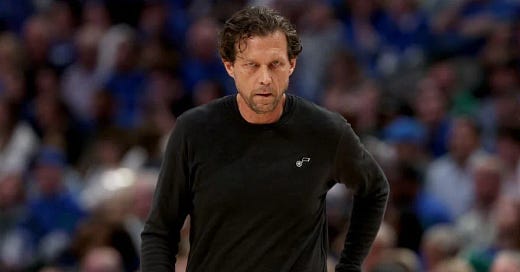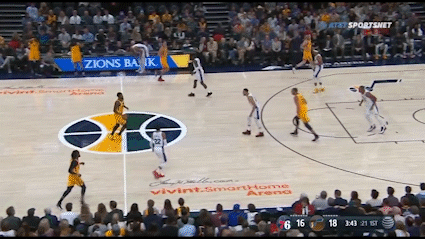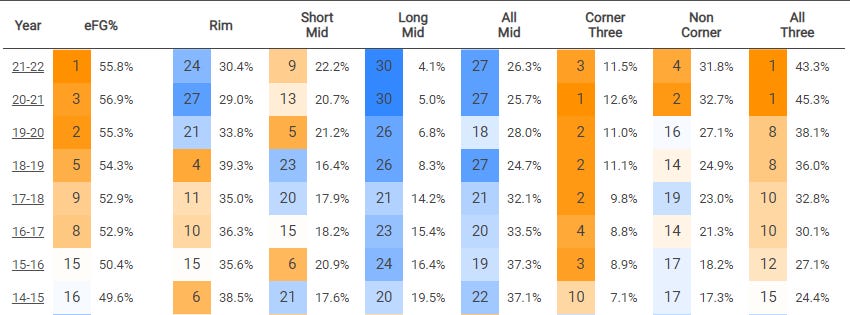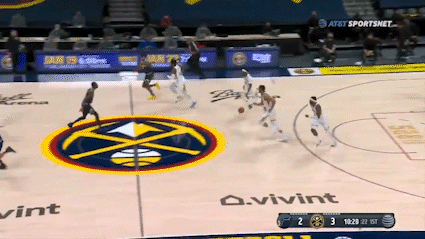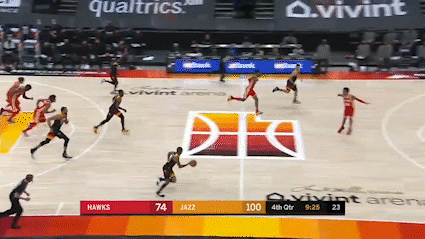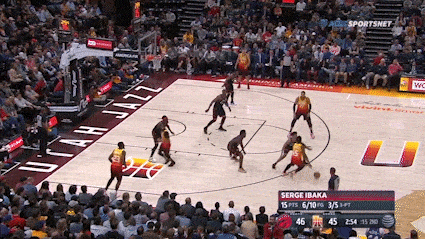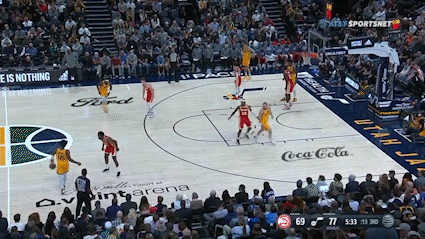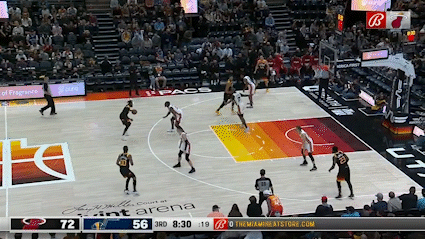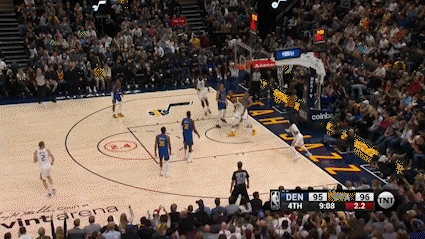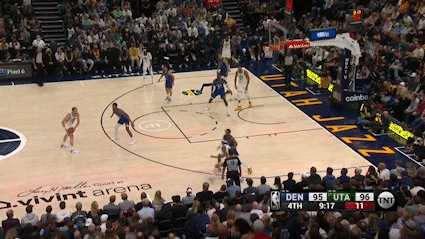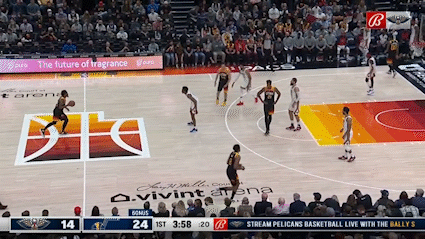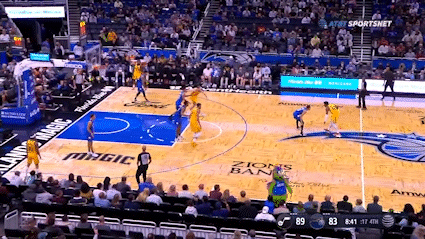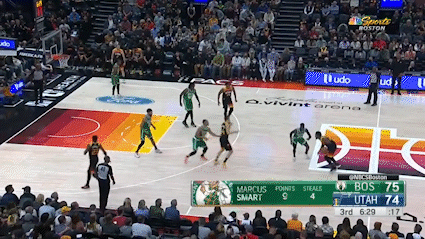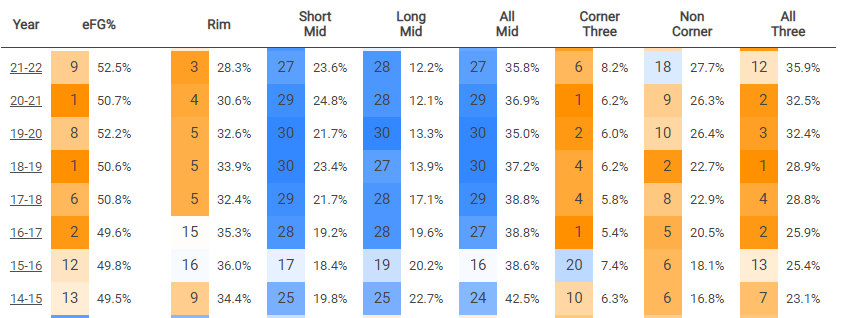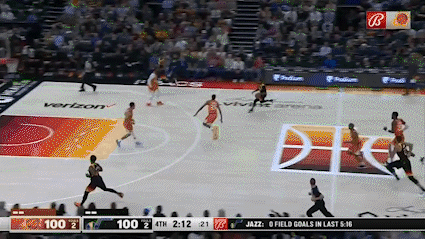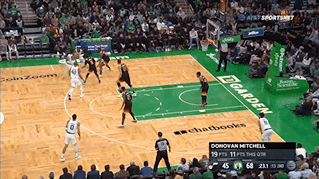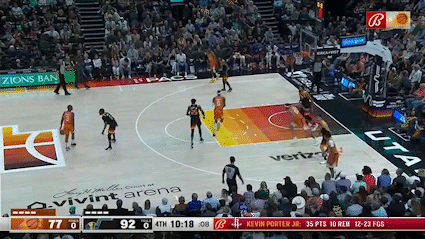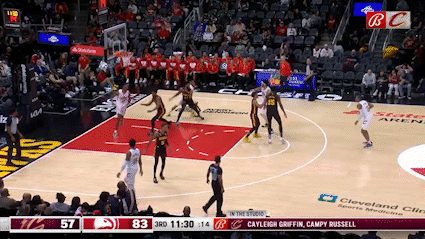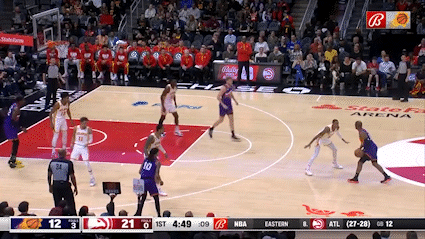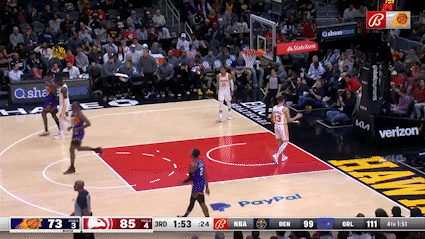Quin Snyder & The Atlanta Hawks
A look at what we could expect when Snyder takes over in Atlanta.
The Hawks are naming Quin Snyder as head coach to replace Nate McMillan with Quin Snyder leaving the Jazz after last season. Those expecting a complete change of style of play for the Hawks, might want to dampen the expectations - sort of.
🏀Resources:
Basketball Playbooks | Coaching Clinics | Coaching Membership | Newsletter
👉🏻Follow:
Latest YouTube Breakdown - Jaren Jackson Jr’s Incredible Defensive Versatility:
Note: This is best viewed in the app, and I have included the full YouTube playlist of all the sets at the bottom of the breakdown. With the length of this breakdown, it is best to open in the App or click here to view in the browser.
Offense
This season the Hawk’s offensive possessions end in a ballscreen 38.1% of the time - the second-most ball screens run in the NBA only behind the Chicago Bulls who are around 40%.
Under Quin Snyder, the Utah Jazz consistently ranked in the top 3 in the % of ballscreens in the NBA and became a lethal machine that was designed around the rim running of Gobert and playmakers on the perimeter. Here is the breakdown of the last 5 seasons for the Jazz under Snyder with the % of ballscreen possessions and the league rank:
21-22: 41.3% (1st)
20-21: 40.1% (3rd)
19-20: 41.2% (2nd)
18-19: 40% (1st)
17-18: 39.2% (2nd)
Of course each individual team and individual year is completely different from the other and just because a coach has coached one way does not mean he will continue to focus on that style of play. Coaches can grow, evolve, and typically learn from their past seasons - especially with a year off - a good example of this is Frank Vogel when he took over the Lakers and incorporated more modern offensive actions. Vogel took over a team with LeBron after a year away and so it made sense he improved and learned from the past and was able to change some of his coaching strategies.
Where it becomes interesting with Quin Snyder and the Hawks is that his base offensive philosophy of a ball screen-centric offense does play into the team he will be coaching centered around two of the best pick-and-roll players in the NBA with Trae Young and Dejounte Murray.
Currently, the Atlanta Hawks are dead last in passes per game, averaging 252 passes per game. Now to be clear, there is not much correlation between passes per game and offensive efficiency - right now only 2 of the top 10 teams in passes per game also have a top 10 offense. A typical Quin Snyder offense ranked in the top 10 of passes per game with more ball movement and actions before and after ballscreens, not just setting up and running spread pick and roll.
Jazz Passes Per Game
21-22: 27th (240 Per Game)
20-21: 13th (241 Per Game)
19-20: 9th (296 Per Game)
18-19: 5th (310 Per Game)
17-18: 7th (319 Per Game)
While passes per game aren’t really a stat that I rely on and put a lot of stock into, I think it is worth noting to see if there are any changes with the current Hawks or for next season.
Utah Jazz Core Concepts
Offense
Shot Profile & Shot Selection
Unery Snyder the Jazz would play “Advantage” basketball or concepts that blend and flow together to always keep the advantage for the offense - also referred to as “Blender.” This was created by sets & concepts, but primarily by basic ball screening action and then driving and kicking from there with great spacing.
The first thing that stands out for the Jazz under Quin Snyder was how they progressively became a 3-point-centric shooting team over the course of his time there. In the last two seasons they shot the most 3-pointers in the league and consistently hunted corner 3s.
A large part of the Jazz finding 3-point shooters was in transition, where they would push the ball and then skip it to the opposite side looking for catch-and-shoot 3s and then finding extra passes/attacks.
More examples of this:
While this season the Hawks are efficient in transition offense - 7th in PPP - they don’t score that often in transition ranking 20th in % of time possessions end with a transition opportunity.
Ballscreen Actions & Blender Concepts
I am just going to out on a limb and say that most people reading this understand what a basic spread ballscreen is, so I am going to keep this brief - the Jazz had their big screen for their guards over and over again using Goberts rim running as a weapon.
Instead of focusing on the basic ballscreen, I wanted to look at a couple of ballscreen actions and sets that the Jazz ran starting with their slot-to-slot ballscreens. I termed these “Blast” actions (don’t remember or I just made it up in the moment) because it was a guard-to-guard screen that seems to catch opponents off-guard on how to defend it and normally forces switches.
Combine with some side-to-side movement like here as the Jazz flip slot to slot and then swing into another hand off and this becomes difficult to anticipate.
Oneale was great at passing and then going right into this and not allowing the defense to recognize the action.
Another guard guard action they went to often is the “Ghost” screen or faking a screen and popping to the 3-point line. These fake screens are great against teams that switch.
Here is an example of them getting into the ghost screen as secondary action and then keeping the advantage. The basic ballscreen is covered well and so the ball is kicked and then reversed.
On the reversal, Ingles ghosts the screen and creates a driving lane for Clarkson and then Conley keeps the advantage and it results in a lob for Gobert.
Using this ghost screen, they incorporated it in one of their main ballscreen sets that are used by most teams in the NBA today. It starts off with ghost action as the first screen out of Horns.
If the initial drive downhill is not open then the big on the opposite elbow sets a flare screen for the player who set the ghost screen.
Because of this chaos, this can also open up the opportunity for the big to slip when the defense overplays.
Then the big will go into a ballscreen if none of the initial options are open.
Stampedes
My favorite concept and the main thing I stole from the Jazz offense for my own coaching philosophy is what most NBA teams call “Stampedes” or downhill drives off the catch.
This is especially useful when attacking closeouts in space and looking to “Run Through” the kickout pass.
Flip the Switch
One of the best counters to attack switching that the Jazz used was to “Flip the Switch” or when the defense switches a big onto a guard, to have the player handling the ball to into a secondary flip action with another player.
They typically ran this action toward the strongside corner so that way the big has to guard in space or stay attached. If the player guarding the corner did cheat in on the drive then the corner 3 would end up open.
Defense
Top 10 finish in 6 seasons, Top 5 in 4 seasons
When you look at a Quin Snyder coached defense, and especially the last 5 years, the shots they choose to give up are typically mid-range looks only. Ranking in the top 5 in both rim frequency % allowed and 3-point frequency % allowed in pretty much every year from 2017-2022.
The defensive strategy for the Jazz was simple, make the other team take the worst shots on the court, and contest as best as possible without fouling.
Ballscreen Drop Coverage
Since they had an elite rim protector with Rudy Gobert, the ballscreen coverage played right into this philosophy by using him in Drop ballscreen coverage.
The basics of this coverage are simple, force the ballhandler inside the 3-point line with rear pressure from the guard and then not allow any rim attacks by having Gobert drop back and protect the paint.
Of course, this would leave the Jazz vulnerable to 3-point shots off the dribble, but for the most part in the NBA you have to give up something and the risk is worth the reward.
Contest & Defend Without Fouling
One of the biggest standouts when looking at their strategy and film was the Jazz did not gamble, did not foul, and made their opponent earn every basket on the court. They consistently improved under Snyder throughout the years and made sure to not give the other team easy chances to score.
Elite Rebounding Team
The Jazz were a top-5 defensive rebounding team for most of Snyder’s tenure, which was impressive considering they downsized into a more 4-Guard lineup the last few seasons (19-20). But that ends up being one of the benefits of helping and keeping your big dropped back in the drop coverage.
Biggest Impact Areas For Improvement
Taking over an NBA franchise in the later part of the season, there will be zero time to implement core philosophies outside of easy changes. Implementing an offensive and defensive system without a training camp, practice time and an offseason to get familiar with it is basically impossible right now. So I think personally the two areas we can expect improvement or tweaks will be on the defensive side of the ball when it comes to simple coverages and schemes and the offensive shot profile.
Defense
I’ll be honest, I’m super skeptical about this Atlanta Hawks current roster and their defensive potential. They make silly mistakes and Trae is such a horrible defender that I can never see them being an elite defensive team. Just…look at this….
Think about the worst defender in Utah under Snyder and they look like borderline all-defense next to what we have seen from Trae. Even if Trae is not involved, there are times when nobody looks prepared for a ballscreen to take place with simple miscommunications.
I was going to dive deep into the issues plaguing the current Hawks season, but it’s just so difficult to watch. The basic premise is they use Capela “Up To Touch” or around the level of the ballscreen instead of playing him deep, and then Okongwu is slightly more versatile so they will switch him more.
Regardless of who is defending the primary ballscreen, the guards defending it in help have not been great and in the correct positions and really seem disorganized.
I expect a couple of changes quickly to the Hawks defensive scheme:
1 - Universal drop coverage unless specific situations (EOG etc).
2 - More consistent help and off-ball focus.
3 - Forcing MUCH more mid-range and improved defensive shot profile.
Note: Hawks are currently 29th in Loc eFG% on both offense and defense. Meaning they take the worst shots on offense and give up the best shots on defense, a recipe for a bad season.
Offensive Shot Selection
Improving shot selection is easy - in theory - just don’t take low efficient shots. But like any bad habit, it’s easy to solve and difficult to fix so it might take some time but ingraining what the best shots are and emphasizing them will improve efficiency right away. This is probably the easiest and single most important idea to implement now and progressively improve for the rest of this season.
I hope this shed some light on the Jazz offensive and defensive philosophy and how some of this might impact the Hawks season the rest of the way.
🏀Resources:
Basketball Playbooks | Coaching Clinics | Coaching Membership | Newsletter
👉🏻Follow:
I hope you enjoy this breakdown, and as always thank you again for all of your support and for sharing my work.
Outwork Yesterday
Coach Pyper

